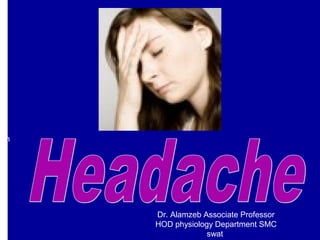This document discusses different types of headaches including their causes, symptoms, and characteristics. It describes tension headaches, migraines, sinus headaches, and toxic headaches. It explains that headaches can be caused by issues inside or outside the skull, such as problems with blood vessels, muscles, eyes, sinuses, infections, or toxic exposures. The majority of headaches are benign and self-limiting, but some rare headaches can signal serious underlying conditions.
































